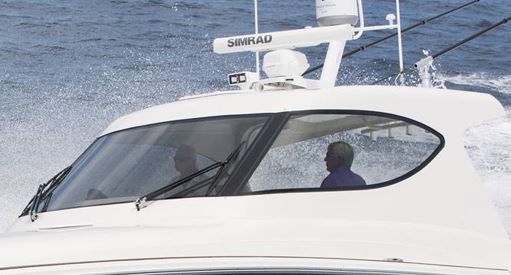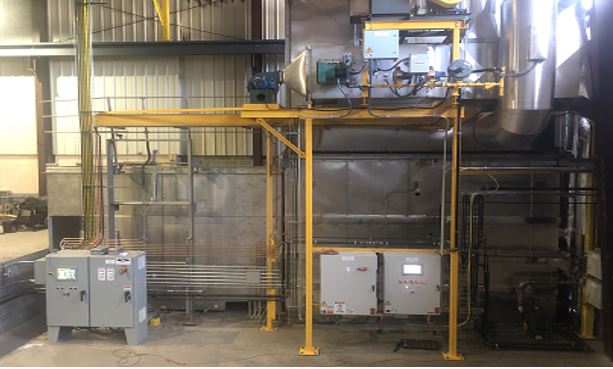Chemically Strengthened (CS) Glass is glass strengthened through an ion exchange process that
produces a compressive stress layer at the treated surface. Soda-lime silicate, sodium
borosilicate, and aluminosilicate glasses can be chemically strengthened. CS Glass is used in a
variety of transportation applications. Examples include boat windshields, railcar windshields
and passenger windows, airplane and automotive windshields.

The Chemical Process
While there are several ways to achieve an ion exchange exist the most successful and widely
practiced is immersing glass in a molten salt bath or solution with or without electric field.
Immersing glass in a molten salt bath, typically potassium nitrate at around 450 oC causes the
potassium ions to replace some of the sodium ions in a micrometer thick layer on the glass
surface.
The potassium ion has a radius that is roughly 0.38 angstroms (Å) larger than than that of the
sodium ion. This results in compressive forces that toughen the glass surface by blocking the
routes along which cracks might propagate.
Advantages associated with the ion-exchange process
- No optical distortion
- The ion exchange process can strengthen glass of all sizes and shapes, as well as glass
that is too thin, small or complex-shaped for thermal tempering. - Compared to conventional laminates and tempered glass, chemically strengthened glass
shows better impact resistance against cracking, improved resistance against scratching
and greater flexural/ mechanical strength (MPa) - Chemically strengthened laminated glass will also withstand thermal shock better than
conventional laminated glass and tempered glass.

Successful test results/ Industry benefits:
Chemically strengthened glass is significantly stronger than annealed and tempered glass. Depending upon the glass composition, strengthening process, level of abrasion, and the application environment, these performance results will vary. The chemically strengthened
laminated glass product will look the same relative to color, clarity, and light transmission for like-kind glass. The key improvements with chemically strengthened glass are improved flexural, mechanical, and tensile strength. Automotive test results confirmed that the standard 2.1mm thick soda-lime glass required on the inside surface layer of the laminate could be replaced with a 0.7mm thick Gorilla Glass, a chemically strengthened aluminosilicate glass. This means that the windshield weight can be reduced with a thinner, stronger product.
Classification of Chemically Strengthened Glass
ASTM C1422 “Standard Specification for Chemically Strengthened Flat Glass” is the industry standard that
addresses the classification of chemically strengthened glass according to its case depth and surface compression.
The chemically strengthened produced at Bent Glass Design is a surface compression > 25,000 psi < 50,000 psi, Level
B case depth < 0.006 inch.

